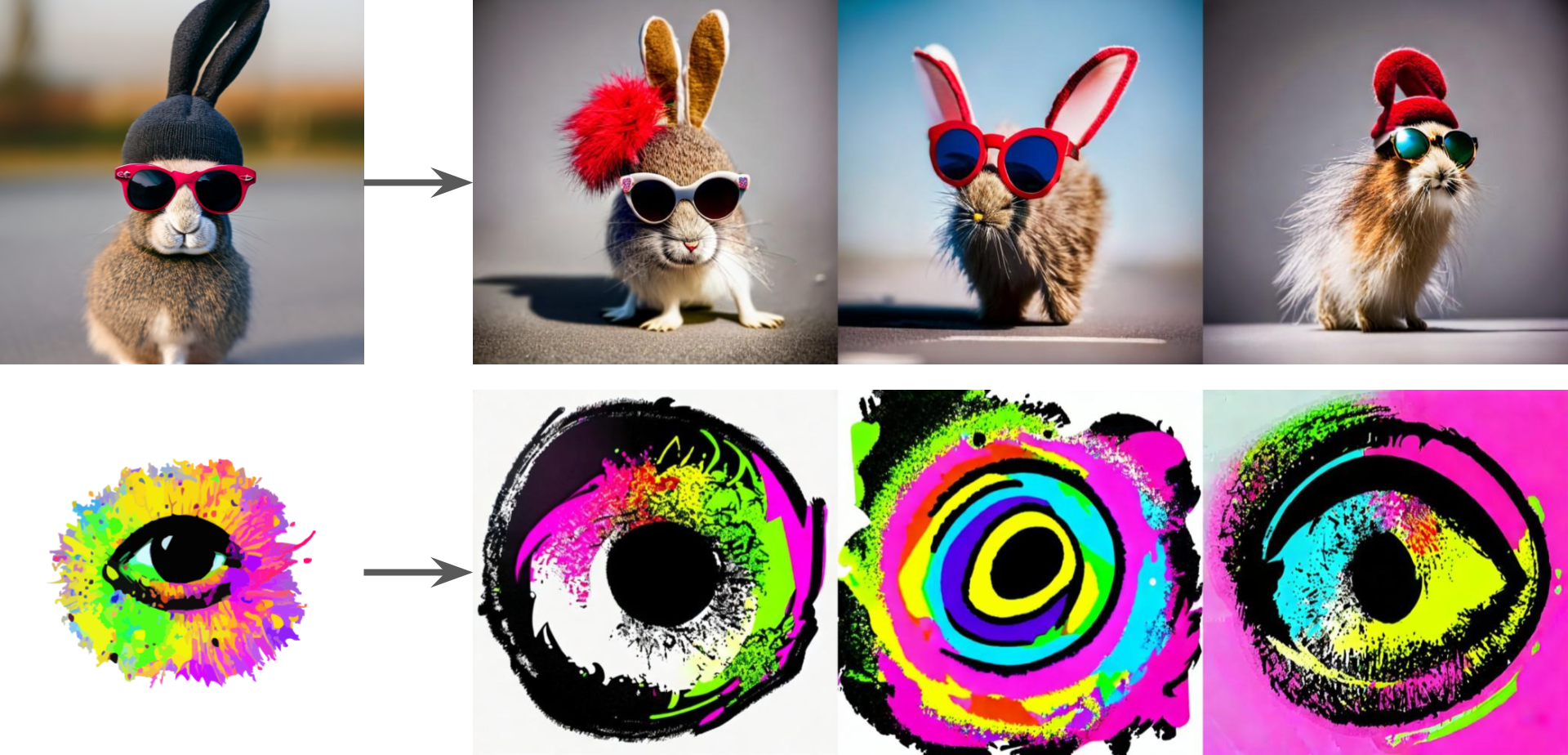Stable unCLIP
unCLIP is the approach behind OpenAI’s DALL·E 2, trained to invert CLIP image embeddings. We finetuned SD 2.1 to accept a CLIP ViT-L/14 image embedding in addition to the text encodings. This means that the model can be used to produce image variations, but can also be combined with a text-to-image embedding prior to yield a full text-to-image model at 768x768 resolution.
If you plan on building applications on top of the model that the general public may use, you are responsible for adding the guardrails to minimize or prevent misuse of the application, especially for use-cases highlighted in the sections below (Misuse, Malicious Use, and Out-of-Scope Use).

Model Details
- Developed by: Robin Rombach, Patrick Esser
- Model type: Diffusion-based text-to-image generation model
- Language(s): English
- License: CreativeML Open RAIL++-M License
- Model Description: This is a model that can be used to generate and modify images based on text prompts. It is a Latent Diffusion Model that uses a fixed, pretrained text encoder (OpenCLIP-ViT/H).
- Resources for more information: GitHub Repository.
-
Cite as:
@InProceedings{Rombach_2022_CVPR, author = {Rombach, Robin and Blattmann, Andreas and Lorenz, Dominik and Esser, Patrick and Ommer, Bj"orn}, title = {High-Resolution Image Synthesis With Latent Diffusion Models}, booktitle = {Proceedings of the IEEE/CVF Conference on Computer Vision and Pattern Recognition (CVPR)}, month = {June}, year = {2022}, pages = {10684-10695} }
Uses
Direct Use
The model is intended for research purposes only. Possible research areas and tasks include
- Safe deployment of models which have the potential to generate harmful content.
- Probing and understanding the limitations and biases of generative models.
- Generation of artworks and use in design and other artistic processes.
- Applications in educational or creative tools.
- Research on generative models.
Excluded uses are described below.
### Misuse, Malicious Use, and Out-of-Scope Use Note: This section is originally taken from the DALLE-MINI model card, was used for Stable Diffusion v1, but applies in the same way to Stable Diffusion v2.
The model should not be used to intentionally create or disseminate images that create hostile or alienating environments for people. This includes generating images that people would foreseeably find disturbing, distressing, or offensive; or content that propagates historical or current stereotypes.
Out-of-Scope Use
The model was not trained to be factual or true representations of people or events, and therefore using the model to generate such content is out-of-scope for the abilities of this model.
Misuse and Malicious Use
Using the model to generate content that is cruel to individuals is a misuse of this model. This includes, but is not limited to:
- Generating demeaning, dehumanizing, or otherwise harmful representations of people or their environments, cultures, religions, etc.
- Intentionally promoting or propagating discriminatory content or harmful stereotypes.
- Impersonating individuals without their consent.
- Sexual content without consent of the people who might see it.
- Mis- and disinformation
- Representations of egregious violence and gore
- Sharing of copyrighted or licensed material in violation of its terms of use.
- Sharing content that is an alteration of copyrighted or licensed material in violation of its terms of use.
Limitations and Bias
Limitations
- The model does not achieve perfect photorealism
- The model cannot render legible text
- The model does not perform well on more difficult tasks which involve compositionality, such as rendering an image corresponding to “A red cube on top of a blue sphere”
- Faces and people in general may not be generated properly.
- The model was trained mainly with English captions and will not work as well in other languages.
- The autoencoding part of the model is lossy
- The model was trained on a subset of the large-scale dataset LAION-5B, which contains adult, violent and sexual content. To partially mitigate this, we have filtered the dataset using LAION’s NFSW detector (see Training section).
Bias
While the capabilities of image generation models are impressive, they can also reinforce or exacerbate social biases. Stable Diffusion was primarily trained on subsets of LAION-2B(en), which consists of images that are limited to English descriptions. Texts and images from communities and cultures that use other languages are likely to be insufficiently accounted for. This affects the overall output of the model, as white and western cultures are often set as the default. Further, the ability of the model to generate content with non-English prompts is significantly worse than with English-language prompts. Stable Diffusion v2 mirrors and exacerbates biases to such a degree that viewer discretion must be advised irrespective of the input or its intent.
